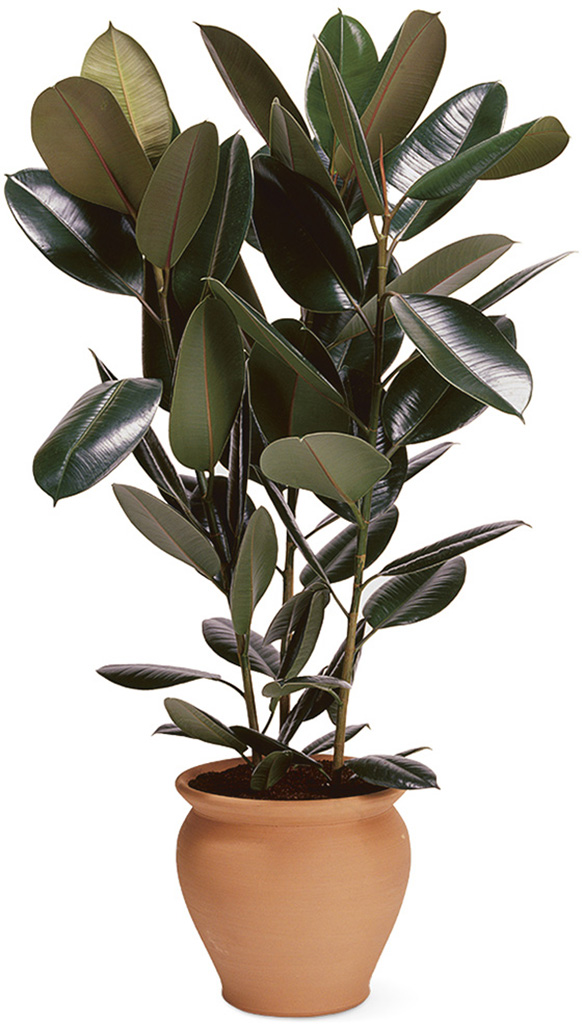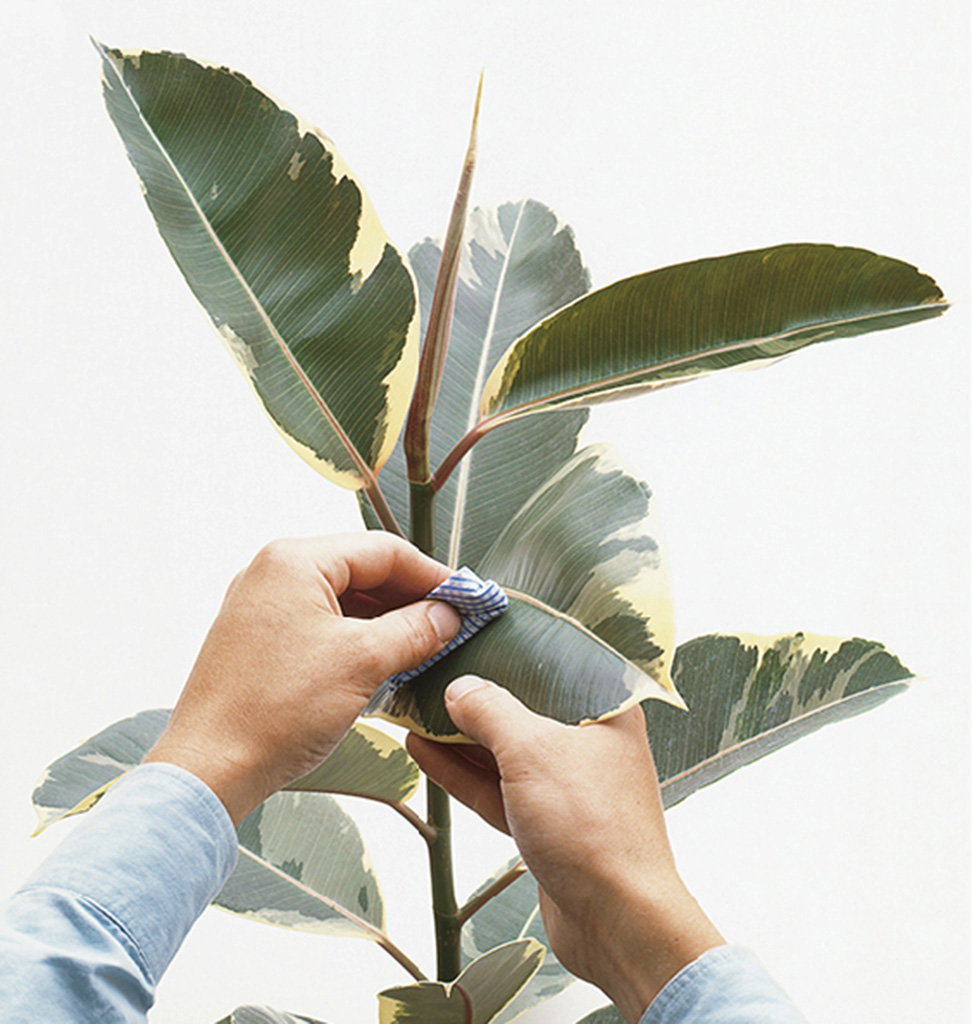RUBBER PLANT
FICUS ELASTICA
The rubber plant is grown for its broad, glossy, dark green leaves and attractive, treelike shape. It’s a popular plant that’s easy to please and copes well in a shady spot if protected from drafts. Enjoying low to moderate humidity, it makes the ideal specimen for a sitting room.
HEIGHT 6ft (1.8m)
SPREAD 4ft (1.2m)
FLOWERS Rarely blooms indoors
FOLIAGE Large, rubbery
LIGHT Filtered sun/light shade
TEMPERATURE 59–75°F (15–24°C)
CARE Easy
PLACE OF ORIGIN South Asia
CARE
Unlike other species of Ficus, this accommodating plant isn’t fussy. It copes well with low light levels and is also fairly drought tolerant, so it’s a popular choice for forgetful gardeners.
If you buy a small plant it will soon grow into an impressive specimen, which makes it a sensible option for anyone who’s on a budget and looking for larger plants for their home. Choose a generous pot and plant in an enriched potting mix with a few handfuls of perlite mixed in to assist with drainage. Rubber plants prefer a generous watering and then the chance to dry out before watering again. Make sure the soil is not consistently damp and never allow your rubber plant to sit in water. Feed every other week in spring and summer with a half-strength balanced fertilizer.
Rubber plants are dust magnets, so wipe the leaves with a damp cloth and it will look, and be, more healthy.
If kept for some time in a shady room, the rubber plant might become a bit leggy. Prune the top growth at least once a year in spring, which will give it a more balanced shape.

The rubber plant is eye-catching, fast-growing, and easy to maintain.
PROBLEM SOLVING If the leaves fall, the most likely cause is overwatering or drafts—both are easily solved. This plant isn’t a stranger to attack by mealybugs and scale insects. You may be able to remedy by wiping them away with a damp cloth.

Clean the leaves with a damp cloth to keep them healthy and shiny.
DISPLAY
No matter how high the ceilings in your home, this plant will grow upward to meet them. Most indoor gardeners keep their rubber plants well pruned so that they don’t become too large. When smaller, they look striking with variegated plants such as the dumbcane and the variegated snake plant. However, avoid planting them together in one pot as they have different watering needs.
Houseplants A–Z | RUBBER PLANT
ALSO TRY
Growing a plant with such shiny leaves is very appealing to many indoor gardeners. If you’re looking for other specimens with leaves to polish that will add gloss to your home, also try:
- Flaming sword (Vriesea splendens), height 24in (60cm). The foliage of this bromeliad has dazzling, lime-green stripes.
- Rubber plant ‘Tricolor’ (Ficus elastica ‘Tricolor’), height 6ft (1.8m). This plant is identical to Ficus elastica but has pink-, white-, and green-patterned leaves and requires more sunlight.
